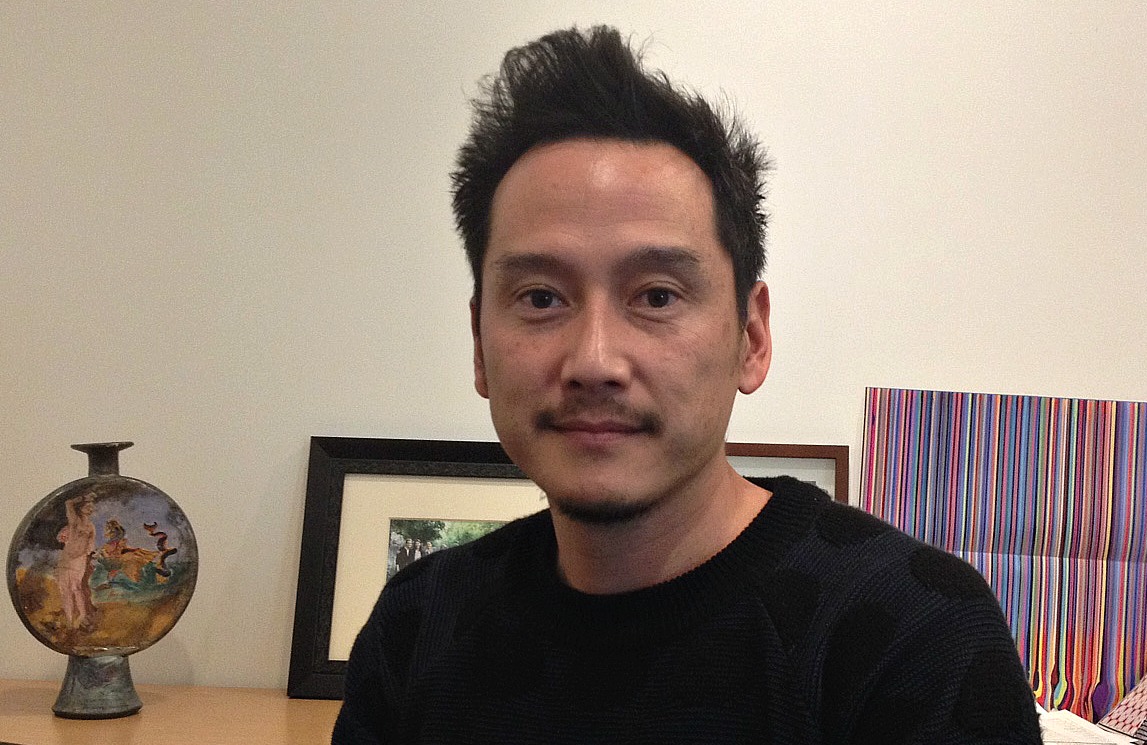To The Moon! At The Fort Worth Modern
ArtandSeek.net February 5, 2016 32A sculpture by Los Angeles conceptual artist Glenn Kaino was the talk of last year’s splashy art fair, Art Basel Miami. Now it’s part of a small show at the Modern Art Museum of Fort Worth — one of the museum’s Focus series on current artists. The sculpture looks like something from a storybook, a sad clown sitting on a moon. KERA’s Jerome Weeks sat down with Justin Martin to explain it’s actually a complex, computerized piece that raises haunting questions about our future in space.
Many people are highly skeptical of the term, conceptual artist. And with good reason. A conceptual artist might take a giant balloon, have someone else paint it blue with a cloud and declare, that’s my statement about clean air and environmentalism. It’s the sky. The problem with conceptual art like that is a) it doesn’t make you feel much of anything and b) it doesn’t really make you think much of anything either, once you understand the basic metaphor, once you get ‘The Message.’
But this is a video of one piece by Kaino. It’s been intensely researched and thought-out. What we see here is about three feet high. So take a look.
Justin: It looks like a mechanical clown of some sort, sitting on a crescent moon.
It’s definitely not Krusty the Klown we’re talking about.
But at the Modern, we have a mechanical Pierrot, interacting with a moon, which has a face and an eye that tracks you around the room when you enter the gallery. There’s a motion sensor in the ceiling. And there are two other things that make Kaino’s sculpture stand out as unusual, unlike all those conventional Pierrots. Let’s play the video.
So it looks like the moon is singing here. And I can’t make out the words, but it sounds like ‘The Internationale.’
The traditional anthem for Marxists and revolutionary workers.

Glenn Kaino. Photo: Jerome Weeks
OK, Pierrot lifts his head and looks at the moon, and it’s like half a head. And it kinda looks African.
Ah, ‘The Internationale’!
There’s the moon, which is kinda close, but what’s this got to do with outer space?
So if you happen to know French well, you might be able to tell the French the moon sings doesn’t sound like perfect French. The moon lisps. Kaino explained that one expert theorized if we’d lived on Mars or the moon long enough, we’d be so used to speaking through astronaut headsets that F’s and S’s would begin to blur together. Just listen to NASA transmissions. So Kaino actually developed lunar and Martian versions of French and English — that’s how highly thought-through this whole project is. Even its title, ‘L’enetenafionale,’ is partly made-up, pseudo-French.
As for your question about what all this has to do with exploring outer space, a simpler way to think about it would be: What are the terms we use for exploring space? It’s the new or the final … ?
Frontier.
Oh. Colonies.
So what’s he saying here?
The actual object was inspired by this notion of looking into space and to ask why are we interested in colonizing space, when we are in crisis on the planet that we currently exist on. But it’s not a lecture.
So he’s not trying to make a big statement. He’s trying to raise questions, some of the same questions raised by Frantz Fanon — only here, they’re applied to the future.
Essentially, why are we talking about exploring planets with the same terms of exploitation and colonization that we used on the New World and the Third World? Look where that got us.
Wow. Thanks, Jerome










